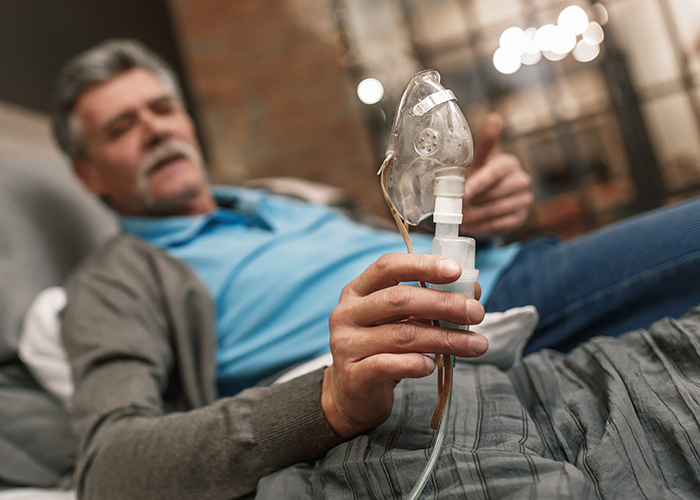Using a CPAP machine may require a period of adjustment. The good news is — these machines can provide an amazing amount of relief with a sound night of sleep.
Still, getting used to the CPAP can be tricky at first. This is why it is a great idea to take a look at some of the ways in which to learn to adapt in order to leverage its numerous benefits. What do the experts have to say?
Obtaining the Right Mask
A CPAP mask is intended to guarantee you get the right amount of oxygen during the night. These masks come in a number of shapes and sizes. Obtaining one that is fitted to the dimensions of your face (as well as your unique sleeping habits) is important if you hope to be comfortable. If you feel that the mask has been sized incorrectly, be sure to speak with your sleep specialist to try other options that fit better.
Mask Adjustments
Every CPAP mask will require adjustments from time to time. If you awake at night and find your mask is off, the tension of the straps could be an issue. The same holds true if you happen to notice red marks around your mouth and nose in the morning. Be sure to make any mask adjustments before bedtime, while you’re lying down.
Constantly Removing the Mask While Asleep
We are all creatures of habit, so instinctively removing a CPAP mask is actually rather common when beginning treatment (even if the mask itself fits snugly and comfortably). In such a situation, speak with your doctor about additional accessories such as a chin strap. This will help to keep the mask in place while sleeping.
Another option involves setting an alarm clock during the overnight hours. You can then determine at what point in the evening the mask is removed. Some also feel that this is an excellent way to “train” your mind to become accustomed to the presence of a mask.
What is the “AutoRamp” Feature?
One main reason why adjusting to this machine can be challenging is the airflow itself. In the beginning, it may be difficult to acclimate to the air pressure into your airways while trying to fall asleep.
This is when the AutoRamp feature can make a difference. The AutoRamp will enable you to start off with a relatively low air pressure when first climbing into bed. The pressure will then gradually increase over next 5-15 minutes. If you have found it difficult to relax otherwise, the AutoRamp option could be an excellent option. Check to see if the autoramp is enables on your device and see if it can be extended toa long ramp up time.
Dealing with a Dry Mouth, Nose or Throat
It is not uncommon for some individuals to notice that their airways have become drier as a result of increased airway pressure. This can make sleeping a bit of a challenge. Thankfully, many CPAP machines offer built-in humidifiers that will help you to avoid such issues. If there is no humidifier, you can purchase a separate unit which that be attached within seconds.
Feelings of Claustrophobia
Do not be ashamed if you happen to experience feelings of claustrophobia when initially adjusting to the mask. Studies have found that up to 30 percent of all individuals become claustrophobic (1). The best way to deal with this scenario is to become familiar with the presence of the mask throughout the day.
Here are four progressive steps which can be taken:
- Place the mask up to your face without including any additional accessories (such as hoses or straps).
- Hold the mask on your face with the hose attached.
- Perform the same actions with the machine turned on.
- Use mask straps when laying down or relaxing during the day.
The main intention here is to slowly acclimate your body to the mask and the machine. Keep in mind that this might require a bit of patience depending upon the severity of claustrophobia that you happen to be experiencing.
A Distracting Level of Noise
CPAP machines have been designed in such a way as to minimize the amount of noise they make while operating. However, there can still be times when elements such as pumps and motors can be distracting when you are attempting to fall asleep.
It is first wise to check for any mechanical issues such as clogged filters or hoses. If this does not solve the problem, speak with your sleep specialist in order to make certain that the machine itself is not defective. Here are some additional tips to keep in mind:
- Place the machine as far away from you bed as possible (additional tubing may be required).
- Wear earplugs during the overnight hours.
- Obtain a machine or software program that produces white noise (there are several YouTube channels which specialize in providing this sound effect).
Most people will eventually become used to the sound that their CPAP machine makes with a bit of time. This also brings us to the final point.
Patience is a Virtue
A CPAP machine is one of the most effective treatments for obstructive sleep apnea. Always remember that your body will need some time in order to fully experience the associated effects. A bit of patience can go a long way towards providing the relief that you have been looking for.
Don’t give up on treating your OSA and sleeping well…it’s important for your quality of life and overall health! If you have tried all these tips and given yourself time to adjust, there are other treatment options you could consider, learn more.
Sources:
1. https://www.jscimedcentral.com/SleepMedicine/sleepmedicine-3-1043.pdf
